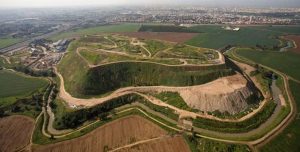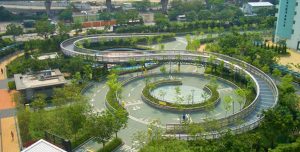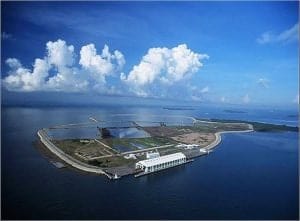Humanity has turned Earth into a giant trash pile. The Environmental Protection Agency estimates that Americans alone produce on average 4.3 pounds of trash each day. Multiplied by 318.9 million people, that’s a lot of trash landing up in the country’s landfills. If there are about 3,500 active landfills in the United States, just one country, think about how many formal and informal landfills there are globally, leaching all kinds of nasty chemicals into ground and surface water supplies and emitting methane gases. It’s a daunting thought. But there is good news. As our knowledge of managing waste improves, we are learning to turn trash into a resource. For example, many landfill sites convert methane emissions into clean energy and many retired landfills have been safely rehabilitated into thriving public parks that reveal nothing of their trashy history. We have rounded up a list of 8. Prepare to be amazed by the transformation.

1. Mt. Trashmore, Virginia Beach
Talk about turning trash into treasure. The satirically named Mount Trashmore went from a devastating brownfield to becoming Virginia’s most popular park, with a children’s playground and a world-famous skate park. Tony Hawk, among several other professional skateboarders, have glided through its 24,000-square-foot skate park in front of packed crowds, and the park itself attracts over one million visitors annually. Situated upon mounds of compacted trash and topped with a layer of clean soil, its lush areas span upwards of 165 acres, with massive hills that stretch 60 feet high and cover over 800 feet of ground.

2. Hiriya Park, Tel-Aviv, Israel
Tel Aviv’s former landfill, called Hiriya was a horrifying mountain of garbage that was know affectionately to locals as “Sh!t Mountain”. This notorious garbage dump hit its limit in 1998 after reaching 25 million tons of waste. After that the facility was finally shut down and an international competition was held to prevent collapse of the waste into the Ayalon riverbed and resurrect the land into what is now the centerpiece of Ariel Sharon Park. Landscape architect and urban planner Peter Latz conceived a plan to protect vegetation from the underlying contaminants, inventing a bioplastic layer that inhibits methane from reaching the surface.
3. Sai Tso Wan Recreation Ground, Hong Kong
Sai Tso Wan’s multipurpose playground was the first of its kind to be constructed from a landfill in Hong Kong. It is also one of the greenest spaces in the region, hosting solar panels, wind turbines, rainwater irrigation, and recycled porous Rubbersoil. Its also the official training grounds of the Hong Kong Baseball Association.
4. Pulau Semaku, Singapore
Although Pulau Semaku is still a fully functioning landfill, and Singapore’s only landfill to boot, it was opened to the public in 2005 for selected recreational activities and still maintains bounds of vegetation in its surroundings areas. Perhaps the most fascinating aspects of Pulau Semaku are its thriving coral reefs and mangroves. Conscious and consistent efforts have been made to replant and maintain the existing reefs, flora and fauna, and wildlife continues to thrive in the site’s mangroves and western shorelines.
To read the full story, visit http://inhabitat.com/8-incredible-parks-created-from-landfills/.


